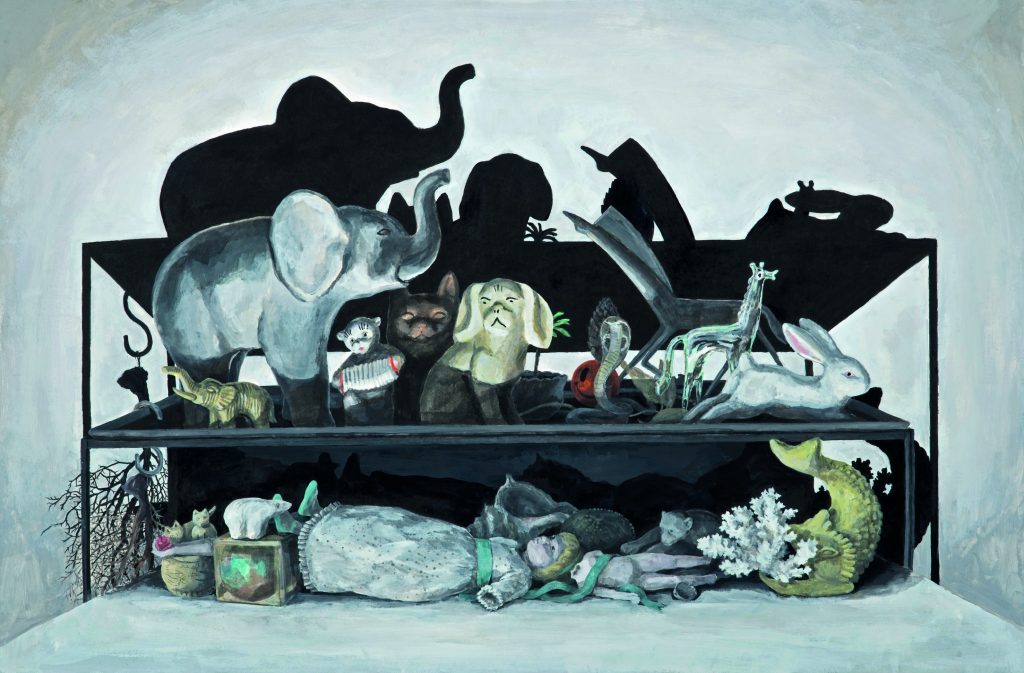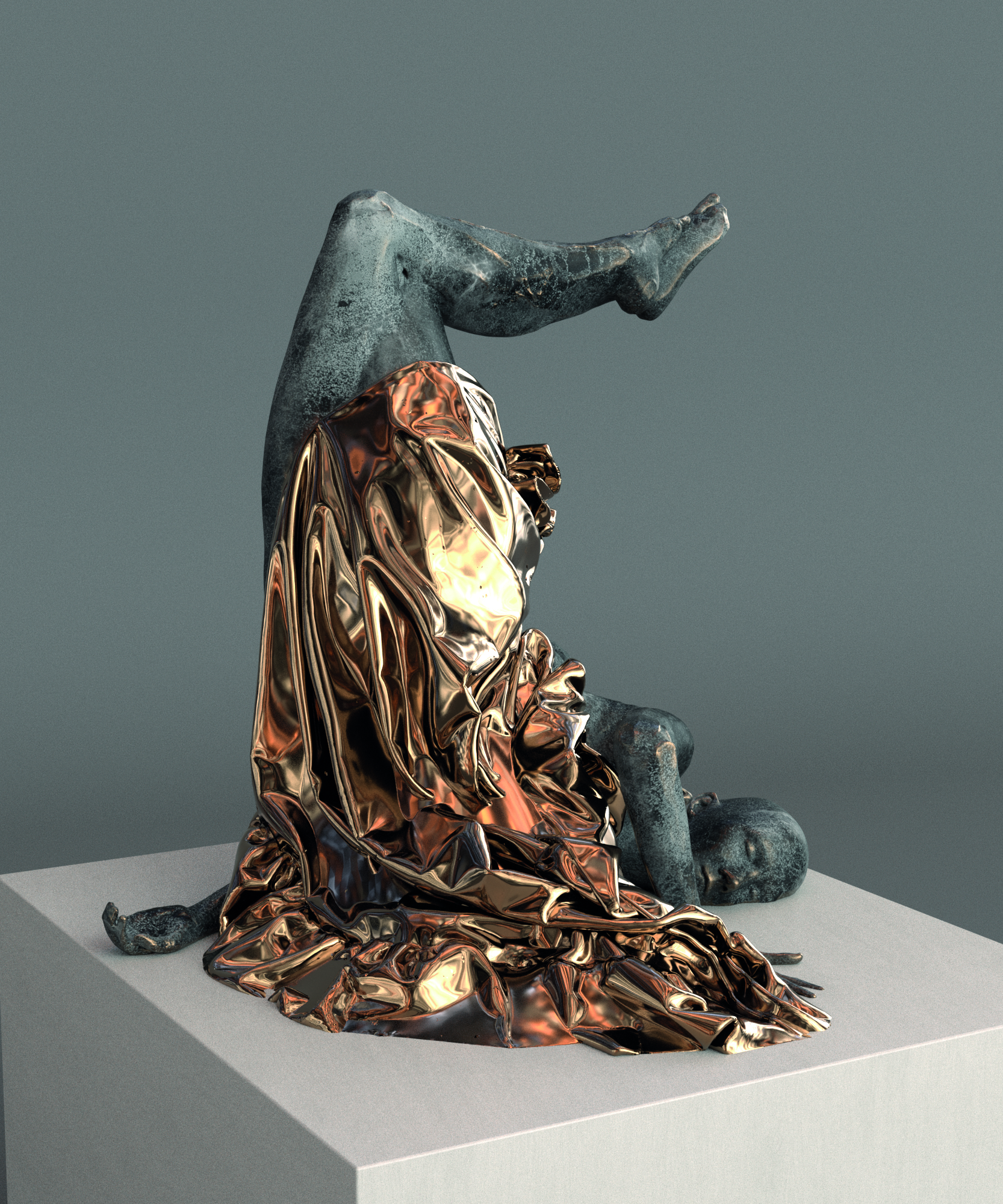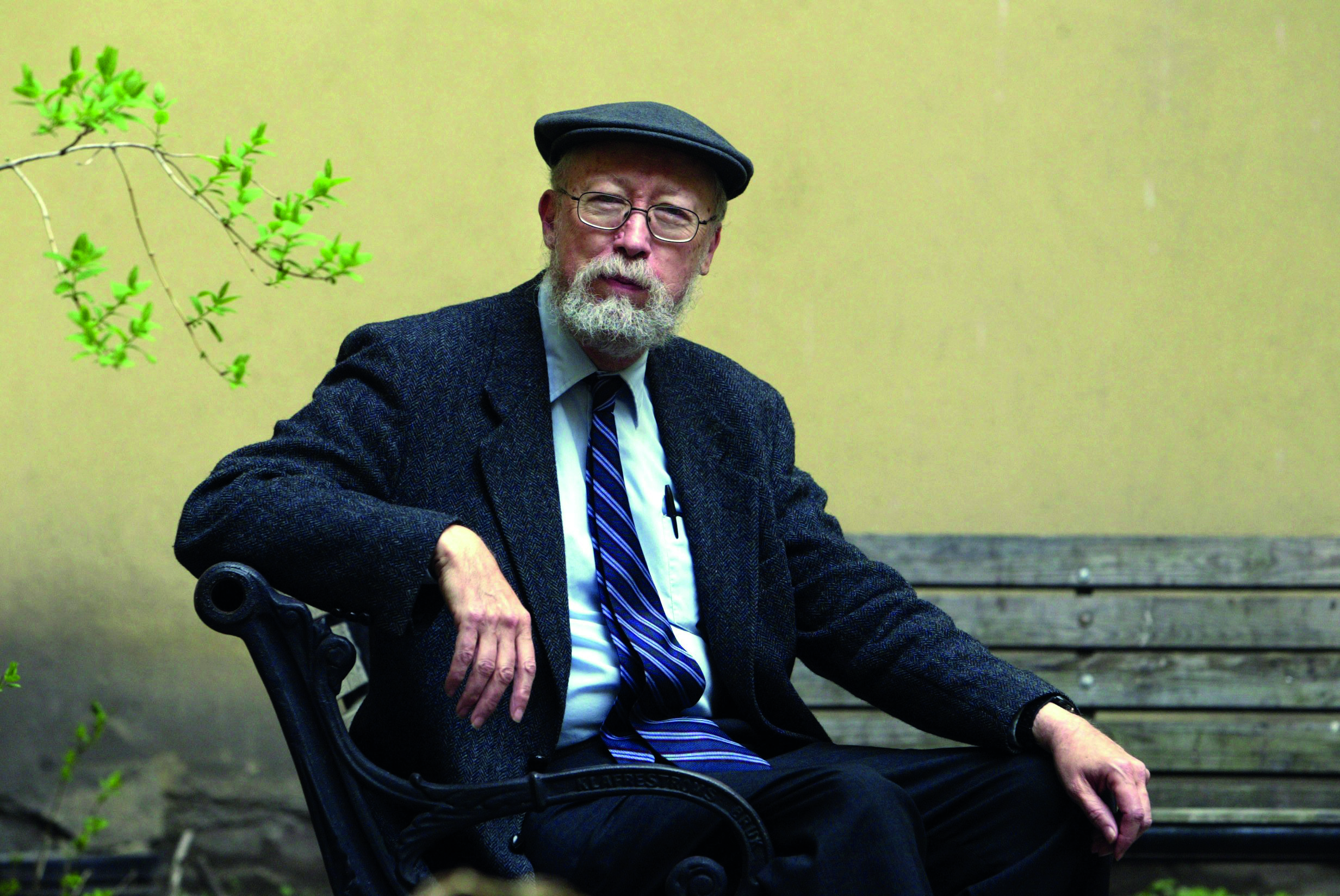-
How did the two polarizing concepts of “in situ/ex situ” come together? Can you speak about your preparation for this exhibition and its conceptual and figurative structure?
I came across ‘in situ’ in Joseph Campbell’s book “Primitive Mythology.” It was used as an archeological term and was kept in Latin as it most likely did not have an exact Turkish translation, which piqued my interest. In medicine and archeology, it means finding and observing something in its ‘original location.’ Here, I take it as a thing’s spontaneity. When I researched more, I came across ‘ex situ.’ This means the exact opposite ; to separate a thing from its natural habitat like botanical gardens, zoos, and even plant or seashell collections that we take home to preserve them. Although I generally like to see nature in its spontaneity, in my works there is a criticism on our tendency to interfere with it in a material and spiritual way. Therefore, the non-judgmental contrast of these concepts and their references to each other seemed consistent with my work.
I was already thinking about our urge to see nature and its representations and our need to keep them close. I started collecting animal trinkets that have been caricaturized and have expressions. In these trinkets I see that animals have come to be reified from the times when they were deified. On the other hand, we add human expressions to them. That makes sense to me.
Most of the gouache series, where I painted these objects, and a major part of the prints were already shaped before the title. Usually I start a new work before even finishing one. I mean when I decided on the title, most of the exhibition was already there, but naming made it a little clearer for me, helped me to complete the works. The title became a framework for the exhibition.
-
I think most of us will not be able to grasp the title of the exhibition at the first encounter. Hence its connotations will be ambiguous. Is this a conscious choice?
Actually, I hoped it would have a Turkish translation. But after some research I could not find an equivalent to “in situ / ex situ.”. Of course, I would be glad if anybody out there knows and shares it with me. I love that the language evolves, changes and feeds on other languages. So although it may seem difficult to understand at first glance, I was conscious of my choice. I did not think the meaning could not be grasped. I think those who are curious will search for it.

-
Your entire creation is a subtle interaction; you work in a very permeable structure in line with your purpose and function of reaching the meanings created by your discourse. How does interdisciplinary work affect your production?
It gives me energy to continue. Not necessarily perfecting a specific technique but the possibilities or difficulties that the technique or the material present make me curious and give me new ideas. Creating is a bit like an emotional and physical need. That’s why sometimes I can start a large-scale piece or a work that requires more physical effort, such as carving, without making conscious decisions and calculating every step. In those cases, I sometimes choose the techniques and materials during the process.
-
Some works in your previous exhibitions, “Interrupted Cycle” and “good, bad, cold, hot,” nature is presented as uncanny. How did these half-human, half-animal figures in your works transform into this ‘preservable nature’ to be observed indoors, these ‘trinket-things’ with their human-like expressions?
In time, I started not wanting human figures in my paintings. I am more interested in looking at plants, and especially painting animals. I am more into anatomical details, or rather the inner world of the human as a whole, physically and spiritually. This transformation actually happened spontaneously. But when we look at this question, maybe we can read the situation like this: human beings are powerless against nature, primarily physically. Everything we develop to overcome the fear this brings, is to feel more potent. We also need to believe that there is something bigger than ourselves. The shifts between seeing nature as bigger than ourselves and being a part of it comes after a period of seeing animals and mythological creatures as guides. Today, we try to live more within reason. I think we come to a point where we consume ourselves when we try to make everything superficially consumable for the sake of feeling superior. In this sense, the nature that we cannot protect we try to preserve; flowers in pots, shoots we try to root in jars, objects we want to keep at home just because we like. They tell us some part of ourselves that we try to ignore.
-
Humans, generally, not accept life as it is develop a controlling ego in order to feel safe. This repetition of attempts to imitate oneself is an effort to make sense of what we control, This results in the constant transformation of the source of one’s creations. If everything is constantly being restructured, what does the image evolve into in your universe? In this context, what is your role in these relationships that you reconstruct?
If I can take the image as a constantly changing and evolving language that we can read and look at to create dialogue, I cannot say that I have a very conscious and active role here. As a person, I try to see how I can nourish from this life and what I can give without harming myself and my surroundings. I hope my expression evolves in time to be simpler and more holistic.
-
In the relationship we establish with “everything outside of us” or “ex situ” in the conceptual note, what is it that is actually outside of us?
‘Outside of us’ is a sad and lonely definition but a human reality. So I think of what is actually outside is ourselves. The world is already spinning in a balance beyond our control, and the moment we exclude anything, we actually deprive ourselves of a relationship and interrupt a flow.
Upon this isolation, we witnessed the unexpected positive effects of the COVID-19 pandemic quarantine measures on the environment and nature. It is as if the faster the virus moves and the less we move, nature cleans it up.
All this improvement will be temporary when governments implement their economic packages. I find it important to ask this because of the relationship of nature with your art: Is a new world order for nature not possible without a disaster?
I guess when the human population is growing so rapidly and the level of consciousness is changing so slowly, nature is de-stressing and breathing during such disasters. We always have hoped for a new world order. For example, there is often talk of people’s level of consciousness leaping forward as the planets change their positions. In this approach also, it seems to me again that humankind is taking itself too seriously. Nature always finds its own way, whether we open a space for it or not. Our destruction may be very rapid, but the strength and speed of nature’s recovery also gives me hope in this regard.
Can be seen at X-ist.







